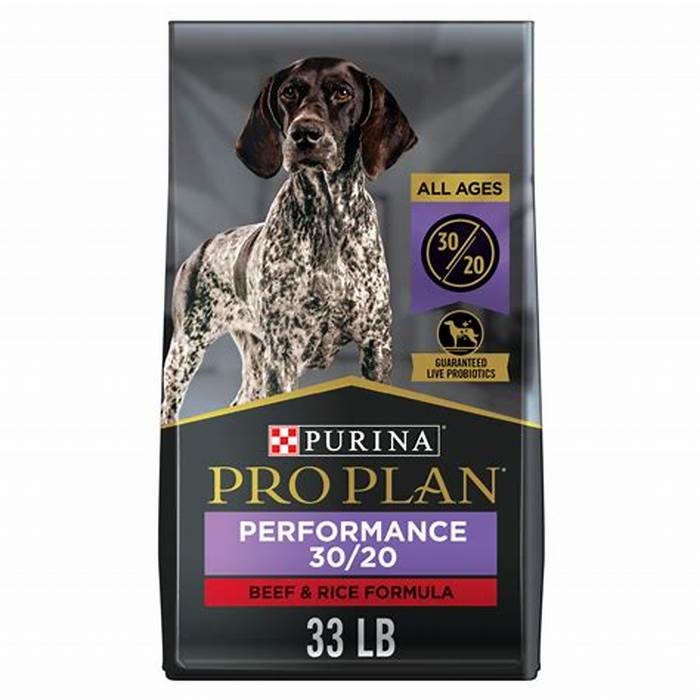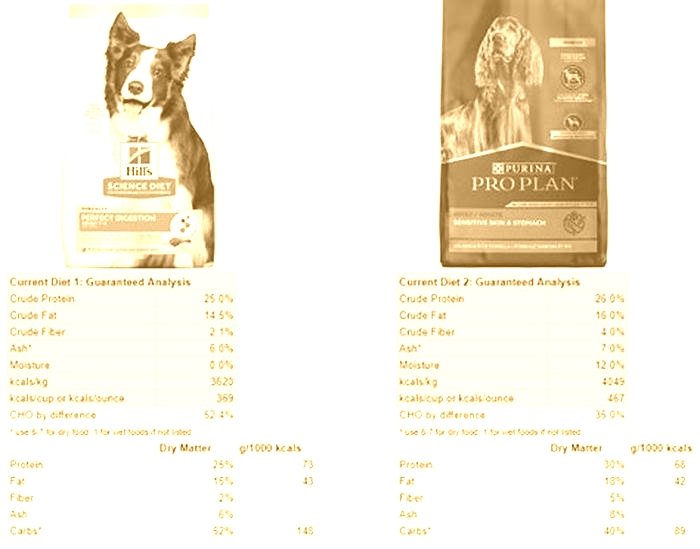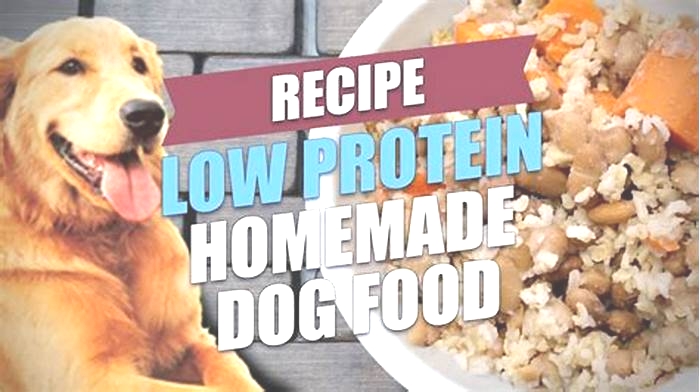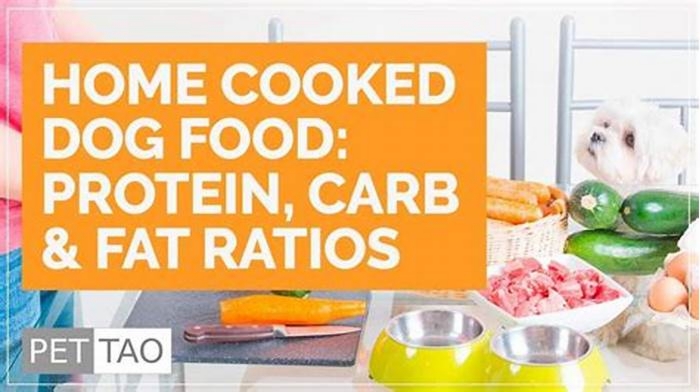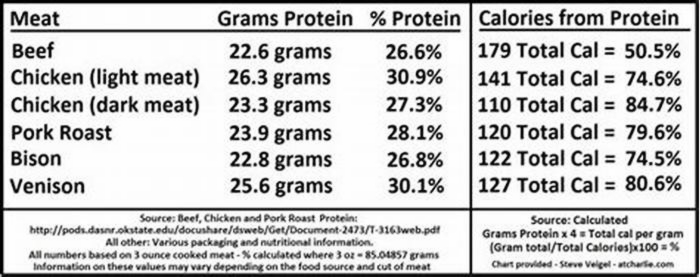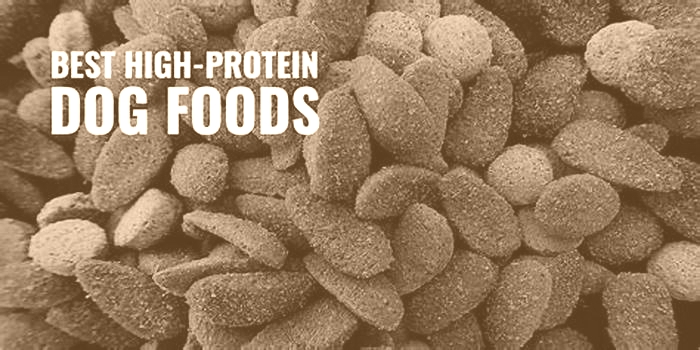how much protein in dog food
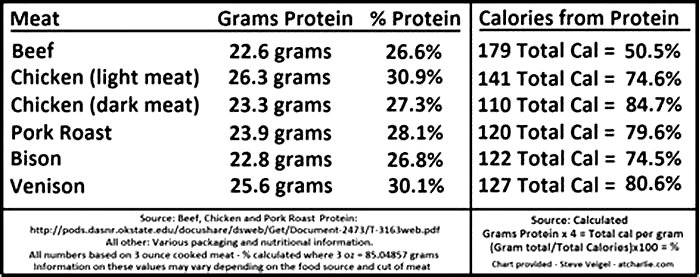
How Much Crude Protein Should Be in Dog Food? Vet Approved Facts & Advice
The information is current and up-to-date in accordance with the latest veterinarian research.
Learn moreFinding out how much crude protein should be in dog food, as it turns out, is not actually an easy question to answer. Let us explore why. The amount of crude protein that should be in dog food varies. There are several variables that need to be considered. Each type of protein has a different level of digestibility and bioavailability. Dogs will need more crude protein if it is less digestible and less if it is more digestible. It all depends on the amount of protein your dog is actually absorbing and able to use from the crude protein.
Individual dog factors will affect how much protein they need to eat, such as life stage, health status, and lifestyle. Middle-aged couch potatoes will need less protein than active young and growing dogs. In addition, the amount of water in the individual food affects the crude protein, so this needs to be taken into account when comparing different foods.
Read on to learn more.

What Is Crude Protein?
Firstly, we need to know what crude protein is. Crude protein is a measurement of the mineral nitrogen content of a food multiplied by 6.25. This gives an estimation (crude) of the protein content of the food, as most nitrogen is found in protein. It is usually written as a percentage of the food by weight. 20% crude protein means that 20% of the food is made up of protein.
Keep in mind that the amount of water in the food can vary the crude protein values a lot, so to compare like with like you need to convert crude protein into dry matter. For example, a dog food kibble with 21% crude protein and 12% water has a dry matter of 23.8%. If you were comparing this with a canned wet food with 8% crude protein and 78% water, this would have 36.4% dry matter protein. This gives you an idea of the limitations of crude protein as a value.

Does Crude Protein Content Matter?
AAFCO governs the nutrient content guidelines for pet foods. They state that food suitable for growth and reproduction should contain a minimum of 22% protein by dry matter basis and for adult maintenance, a minimum of 18% by dry matter.
They do not list it as crude protein due to the difference that water content makes. There are also no guidelines for the maximum amount of protein that should be in dog food. Dog food that has higher amounts of crude protein listed doesnt necessarily mean that your dog is going to absorb more protein from those foods or that it is automatically better for them.
Digestibility and Why It Matters
When it comes to protein, digestibility matters. If a protein has high digestibility, your canine is going to get much more nutrition out of it than a low-digestibility protein. Typically, its the source of protein that governs digestibility. Therefore, you can make a pretty good estimate of a dog foods digestibility based on the sources of the protein.
Generally, meat-based protein is more digestible than plant-based protein. Therefore, ingredients like pea protein may increase a foods crude protein, but the digestibility may not leave your dog with much. However, corn gluten has a very high level of digestibility. Lamb meal has a low digestibility, especially for being a meat-based protein. Fish, dairy, and eggs provide some of the most highly digestible protein.
On top of the type of meat, the part of the animal the meat comes from also matters. Cooking and processing can affect digestibility as well. Therefore, assessing the digestibility based on food labels alone can be challenging. You can look at the type of protein, but these other factors arent usually apparent.

Factors to Consider
Many factors affect how much protein your dog may need. Adult dogs need different amounts of protein than puppies or seniors, for instance. Youll need to consider your particular dog, as well as the digestibility of the crude protein included.
- Life Stage: Puppies need more protein than adult dogs do. Therefore, you have to consider if your canine is still growing or not. Senior dogs also need more protein, as they typically dont digest protein as well, and it takes more protein to maintain muscle mass in older dogs. For this reason, we highly recommend high-protein diets for seniors, but check with your vet first.
- Performance: More athletic canines require more protein, as they need to rebuild their muscles after damaging them during exercise. Dogs with professional jobs typically need more protein as they move more than their companion counterparts.
- Weight: Dogs that are currently overweight require more protein than other dogs. Protein helps them stay full longer, which can help them lose weight. If youre trying to encourage weight loss, be sure any formula you purchase has a higher amount of protein. However, the key is moderation since high-protein diets are also high in calories.
- Disease: Certain disorders can affect your dogs ability to absorb protein, increasing their need for crude protein. Furthermore, some dogs need less protein to prevent certain disorders from becoming worse. In this case, these dogs may need less crude protein. Several diseases can affect a dogs protein needs, so speak to your vet if your canine has any underlying problems.
- Food Allergies: Most food allergies are linked to specific proteins. These proteins can be from plants or meats. Typically, it takes a lot of exposure before a dog is allergic, so this condition is rarer in puppies. Food allergies may not affect the amount of protein your dog needs, but they can affect the types of protein they can consume.


Conclusion
It is challenging to specify exactly how much protein your dog needs. Different types of protein have different digestibilities and bioavailabilities. Plus, some factors may increase or decrease your dogs protein needs, such as their age. Therefore, there are simply too many factors involved to make one overarching recommendation. Foods that carry the AAFCO label will contain the minimum recommended nutrients for the life stage mentioned, and that is a good starting place. However, most dogs need food thats between 18% and 22% on a dry matter basis as a minimum.
Featured Image Credit: Caftor, Shutterstock
A guide to the best protein sources for dogs
Can dogs eat a vegetarian diet?
Though dogs are naturally omnivores, they can thrive on a vegetarian diet of balanced nutrients. Without the proper supplements, however, its possible that a dog on a vegetarian diet can experience protein or vitamin deficiency.
What is the best protein for overweight dogs?
Not all dog foods and protein sources are created with bioavailability in mind, so its important to consult your vet before making major dietary changes to Fidos nutrition plan, especially when it comes to weight loss. That being said, vets may recommend fresh, lean proteins such as chicken, turkey, fish, and eggs coupled with high fiber foods such as fresh brussels sprouts and broccoli.
What is the best protein for dogs with sensitive stomachs?
This actually depends on your dog as certain proteins may increase stomach sensitivity in your dogs. For example, your vet may recommend switching from a chicken-based diet to a diet with more beef or fish if your dog has a sensitive stomach. In general, youll want to look out for high-quality ingredients when shopping around for dog food.
Is meat better than meat-meal?
Actually, ingredients that list chicken meal refer to chicken with the water and fat removed, meaning it can actually contain a higher percentage of protein4 compared to just chicken as an ingredient. When you see chicken listed as an ingredient, it refers to unprocessed chicken with water.
Whats the healthiest meat for dogs?
To determine whats healthiest, you need to understand how the meats have been processed, whether your dog has an allergy to a certain meat, and whether your pup enjoys the food to ensure they will even retain the nutrients! Protein sources like chicken, turkey and lean ground beef are all great options for animal-based protein diets.
Is chicken or salmon better for dogs?
Chicken and salmon both retain high biological value for dogs, but the quality of protein depends on how the meats have been processed and whether or not your dog has an allergy to a certain meat.
Whats the most easily digestible protein for dogs?
Whole eggs have high biological values and are a great source of protein for Fido, but there are many recommended options, including chicken, turkey, salmon, and lean ground beef.
How much protein should dog food have?
The minimum requirement of crude protein3 for adult dogs is 8%, but the average diet for an adult dog typically contains 25-30% crude protein on the food label. Exactly how much protein your dog needs varies depending on your dogs breed, weight, health conditions, and activity level.
What fish is best for dogs?
Salmon and tilapia are highly recommended by vets! When trying out Fidos tolerance to any particular fish, start with a small amount.
Are any meats bad for dogs?
Not generally, though pork is a fattier cut of meat and can increase risk of developing pancreatitis, so youll want to keep consumption to a minimum. If your dog is sensitive or allergic to a certain meat, youll also want to avoid this as a protein source and consult your vet for an alternate source.
Do dogs prefer beef or lamb?
It all depends on your dogs allergies and pickiness! Many pups with allergies to chicken, fish or beef switch to lamb-based diets.
How Much Protein Is in Dog Food: Unraveling the Canine Nutrition Mystery
As dog owners, we all want the best for our furry friends. A balanced and nutritious diet is essential, and one of these key components is protein. This article will delve into canine nutrition, exploring how much protein is in dog food and why it matters.
Introduction
Importance of Protein in Dog Food
Protein is the cornerstone of a dogs diet, playing a vital role in various bodily functions. From muscle development to immune system support, the right amount of protein is crucial for your dogs overall well-being.
The Role of Protein in a Dogs Diet
Beyond mere sustenance, protein contributes to a shiny coat, strong nails, and energy levels. Understanding the significance of protein sets the stage for making informed choices about your dogs diet.
Understanding Dog Protein Needs
Factors Influencing Protein Requirements
Not all dogs are the same; factors like age, breed, and activity level influence their protein needs. Tailoring the protein content of their diet to these factors ensures optimal health and vitality.
Different Protein Sources in Dog Food
Dog foods come in various formulations, incorporating proteins from both animal and plant sources. Knowing the difference helps you make choices that align with your dogs nutritional requirements.
Determining the Right Amount
Guidelines for Protein Intake Based on Age and Size
Puppies, adult dogs, and seniors have different protein requirements. Understanding these guidelines ensures you provide the right amount at each life stage.
Risks of Excessive Protein in Dog Food
While protein is essential, excessive amounts can pose health risks. Well explore the potential downsides and how to strike the right balance for your furry companion.
Types of Proteins in Dog Food
Animal-Based Proteins
Meat, poultry, and fish are familiar animal-based protein sources. Well break down the nutritional profiles of these sources and their benefits.
Plant-Based Proteins
For dogs with dietary restrictions or preferences, plant-based proteins offer viable alternatives. Well explore which plants provide complete proteins and how to incorporate them into your dogs diet.
Balanced Protein Combinations
Achieving a well-rounded diet often involves a mix of animal and plant-based proteins. Well discuss the concept of balanced protein combinations and how they contribute to overall canine health.
Reading Dog Food Labels
Deciphering Protein Content on Labels
Understanding how to read and interpret dog food labels empowers you to make informed choices. Well guide you through the maze of information, focusing on the critical details related to protein content.
Identifying High-Quality Protein Sources
Not all proteins are created equal. Learn to distinguish high-quality protein sources, ensuring your dog receives the best nutrition from their food.
Special Dietary Considerations
Protein Needs for Specific Breeds
Different breeds may have specific protein requirements. Well explore these variations and provide insights into tailoring diets to suit individual species.
Protein and Health Issues in Dogs
Certain health conditions may influence protein needs. Well show you how to navigate these situations and meet your dogs nutritional requirements.
Homemade Dog Food and Protein
Pros and Cons of Homemade Dog Food
Some pet owners prefer preparing meals at home. Well discuss the advantages and potential pitfalls, focusing on maintaining adequate protein levels in DIY dog food.
Ensuring Adequate Protein in DIY Meals
If you opt for homemade meals, well provide tips on ensuring they meet your dogs protein needs and overall nutritional requirements.
Popular Dog Food Brands and Their Protein Content
Analyzing Protein Content in Leading Brands
Explore the protein content of popular dog food brands, understanding how they stack against each other regarding nutritional value.
Consumer Considerations for Protein-Rich Options
For those navigating the aisles of pet stores, well offer guidance on choosing protein-rich options that align with your dogs preferences and dietary requirements.
The Connection Between Protein and Dog Health
Impact of Protein on Coat and Skin Health
A shiny coat and healthy skin are indicators of a well-balanced diet. Well delve into how protein contributes to these aspects of your dogs appearance.
Proteins Role in Muscle Development and Maintenance
Muscle development is crucial for active dogs or those in their formative years. Discover how protein supports muscle health and vitality.
Common Myths About Dog Protein Requirements
Debunking Misconceptions About High Protein Diets
Separating fact from fiction, well address common myths surrounding high-protein diets and their potential impact on dogs.
Addressing Concerns About Protein Allergies
Some dogs may be sensitive to specific proteins. Well discuss identifying and addressing potential protein allergies in your furry friend.
Recommendations from Veterinarians
Professional Insights on Dog Protein Needs
Veterinarians play a crucial role in guiding pet owners. Well share expert recommendations on meeting your dogs protein needs and maintaining their overall health.
Tailoring Protein Intake for Individual Dogs
Every dog is unique. Well explore how to tailor protein intake based on your dogs characteristics, ensuring a personalized approach to nutrition.
Homemade Dog Treats and Protein Snacks
Incorporating Protein into Dog Treats
Treats can be both delicious and nutritious. Discover creative ways to include protein in homemade dog treats, keeping your pup excited and healthy.
Ensuring Nutritional Balance in Snacks
While indulging your dog with treats, its crucial to maintain a nutritional balance. Well provide tips on crafting snacks that complement your dogs diet.
Trends in the Dog Food Industry
Protein Trends in Commercial Dog Food
Stay updated on the latest trends in commercial dog food, focusing on protein formulations and their impact on the market.
Emerging Innovations in Canine Nutrition
From novel protein sources to advanced processing techniques, explore the innovations shaping the future of canine nutrition.
Customer Reviews and Experiences
User Testimonials on Protein-Rich Diets
Real-life experiences offer valuable insights. Well present user testimonials highlighting the impact of protein-rich diets on dogs health and well-being.
Real-World Feedback on Different Brands
Considering switching your dogs food? Well share real-world feedback on various brands, helping you make an informed decision.
Conclusion
Recap of Key Points
In conclusion, understanding how much protein is in dog food empowers you to make informed choices for your canine companion. Balancing their nutritional needs ensures a happy and healthy life.
Encouragement for Responsible Pet Nutrition
As a responsible pet owner, your choices matter. By prioritizing your dogs protein needs, you contribute to their overall well-being. Remember, a well-fed dog is a happy dog.
FAQs
- Q: Can I feed my dog too much protein? A: Yes, excessive protein can lead to health issues. Follow guidelines based on your dogs age and size.
- Q: Are plant-based proteins suitable for all dogs? A: While some dogs thrive on plant-based diets, others may require animal-based proteins. Consult your vet for personalized advice.
- Q: How do I identify protein allergies in my dog? A: Watch for signs like itching, gastrointestinal upset, or changes in behavior. Consult your vet for a proper diagnosis.
- Q: Is homemade dog food a better option for protein intake? A: It can be, but it requires careful planning to ensure all nutritional needs, including protein, are met.
- Q: Whats the ideal protein content in dog food? A: The ideal content varies by factors like age and activity level. Consult your vet to determine the right balance for your dog.

